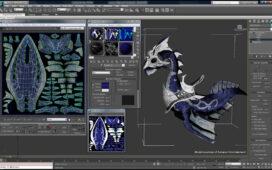Introduction:
When it comes to data, the needs of upper management are best met by an EIS or executive information system software. The EIS is distinguished by a graphical user interface that is both user-friendly and easily maintained, as well as features like data access, analysis, control, report generation across many files, and “drill down” functionality that can be activated on demand. The vast majority of today’s MI systems offer a plethora of status reports with fine granularity. However, they cannot provide higher-level management with information in a format suitable for summary analysis. Enterprise resource planning systems have been unable to stop this issue from persisting. Readers will gain insight into how EIS has evolved to satisfy the needs of senior management in an enterprise system set by first familiarizing themselves with the concept and functionality of classic executive information system software.
The EIS has the following distinguishing features:
The following sections describe the features of a typical executive assistance system:
- 1.The ability to drill down:
The executive can use this to learn more about specific data, such as a decline in company sales in a particular location. Data collecting in graphical user interface systems typically make use of hypertextual links. When working with a menu-driven system, you can drill down into more menus to see information in greater depth.
- Designed with Management’s Critical Success Factors in Mind:
Every business has its own distinct priorities. Such considerations may be made at the individual, group, or company level.
- Reporting Exceptions, Analyzing Trends, and Viewing Current Status:
Executives can now quickly get up-to-date information on any relevant metric. The executive can use trend analysis to look at data over a specific period. Consequently, the importance and relevance of information at the right time cannot be overstated. When reporting an exception, it is acceptable to specify why a particular instance deviates from the norm in the company.
- Individualized Reporting:
EIS’s in-built tools are put to use in analyzing troublesome scenarios. With these features, executives can now specify the data needed for the analysis and the format type (in which results are displayed).
- Informational Pathfinding:
Consequently, this facilitates the rapid and precise retrieval of massive data sets.
Uses Charts, Tables, and Text to Communicate Data:
Information obtained can be presented to executives in several ways, including textual, tabular, and graphical formats at the terminal.
Shop Floor Management:
The place where things get made, or “shop floor” for short. The workers may accomplish this manually, or sophisticated automation technology could be used. Management on the shop floor, then, is the management of where the production takes place. The use of shop floor management software that can identify bottlenecks in the production process is essential.
Shop Floor Management Objectives
- Be sure that supplies are being sent in the right direction on the factory floor.
- Make efficient use of the shop floor’s processes and procedures
- Materials, labor, and operations must be planned ahead of time.
- Find and repair any breakdowns in communication.
Conclusion:
Supporting executive-level decision-making is the primary function of an EIS or executive information system software. Any senior manager or executive who makes strategic decisions to boost the organization’s long-term success can benefit from an EIS, not just the CEO. EIS stands for Executive Information System. However, it is sometimes called an ESS. Project managers can reinvest these time savings into more strategically essential endeavors. Beyond improved shop floor management, this inevitably leads to gains in related areas.











